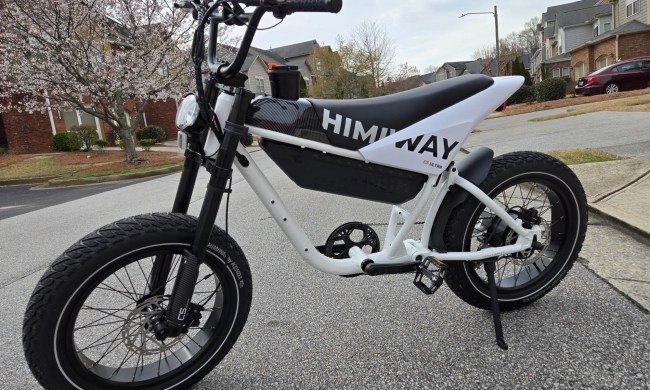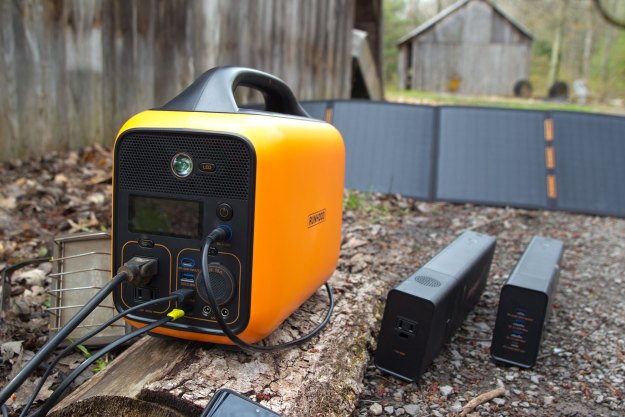
“A fun concept with some specific use cases, but still needing refinement in both performance and design.”
- Unique modular design
- Audio alerts
- Met advertised capacity
- One pack failed in testing
- Some awkward design decisions
- Packs scrape in and out
- Doesn't feel rugged
It can be really hard to find a power station that’s interesting. When shopping around, it’s often as simple as answering “Does it charge my stuff?” That’s why the Runhood Rallye 600 caught my eye when it came out late last year.
Instead of just being a big chunky battery, it sports two bays for removable power packs. This means you can hot-swap empty batteries in the housing to charge and walk away with the full ones. You can then put a module on the end of one of those fresh batteries to either plug in USB devices or standard AC devices.
The basics
Let’s go over the main features of the Rallye 600.
- 2 x USB-A out, QuickCharge 3.0, 28 W each
- 2 x USB-C, 1 out, 1 in/out, 100 W each
- 2 x AC, pure sine, 300 W each
- 2 x DC out, 60 W each
- Car lighter DC out, 120 W
- DC in, 180 W
- LED flashlight with three flash modes
- LCD status display
- 1296 Wh between four battery packs
- 17 pounds
The hardware layout is generally practical but introduced a few hurdles. For one, the handle makes storage a little challenging. I’ve generally favored power stations with flat tops so you can stack stuff on them. This seems to be a decision Rallye has remedied in its recently-announced 1200W modular power station.
Second, the two AC outlets share a grounding wire slot, which means you’re kind of screwed if you want to plug in two devices with grounds.
Third, the battery packs fit very snugly in the charging bays, but they don’t go in on guide rails or anything. It’s just plastic on plastic. It didn’t take long for the packs to start scuffing along their corners, and I’m concerned about longer-term wear. Still, the locking mechanism in the back ensures confidence that the battery pack is in place.

The plastic shell of the housing unit doesn’t feel especially sturdy, which is too bad because it’s easy to imagine something like this in a remote, rough environment. When trying to figure out who might best put a system like this to use, I thought of environmental researchers who go out into the boonies to collect data with power-hungry equipment. You could have the housing plugged into solar panels at a campsite, then two teams heading out during the day each with one of the battery packs to keep their drones powered. Once they come back, they can swap in their dead batteries, and get ready to go again with the fresh ones.
That’s a pretty specific use case, but ultimately this thing hinges on being able to scale the portability of your power up or down as needed. If you don’t find yourself shifting gears like that often, there are probably more straightforward power stations available for you.
Rounding out the hardware is a clear LCD screen that provides all of the relevant alerts, and an LED flashlight, which is a handy mainstay for most (but not all) power stations. The Rallye 600’s audio alerts are crisp and useful for knowing when your batteries are running low. There’s no wireless charging or mobile app here, which are nice extras some competitors offer.
Is hot-swapping that hot?
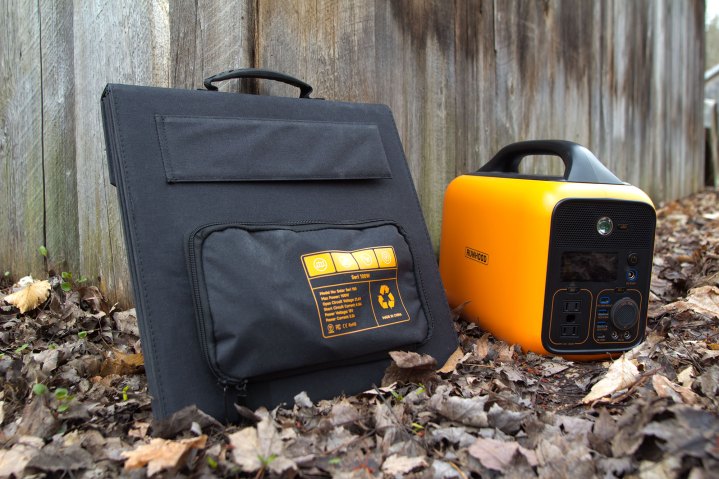
I was testing the Pro kit, which included four battery packs total and a 100W solar panel.
The biggest issue I bumped into was the failure of one of the battery packs. After a full discharge inside the housing, the pack was unable to charge back up. It flashed all five of its LEDs whenever it was turned on, indicating a critical failure. I was completely depleting these batteries, and swapping them out routinely. In this instance, I have no doubt that I would be able to tap into the two-year warranty for a replacement, but it does make me a little suspicious about the reliability of this modular set-up.
The product page boasts “swapping batteries on the go” and “batteries that can be switched even when running”, but the instruction manual is loaded with warnings like “when charging, DO NOT remove battery from the housing”, and “we highly recommend you charge the batteries in pairs.” Those are hard qualifiers to keep in mind if you’re in a fast-paced quick-swapping environment, especially if the stakes are a dead battery.
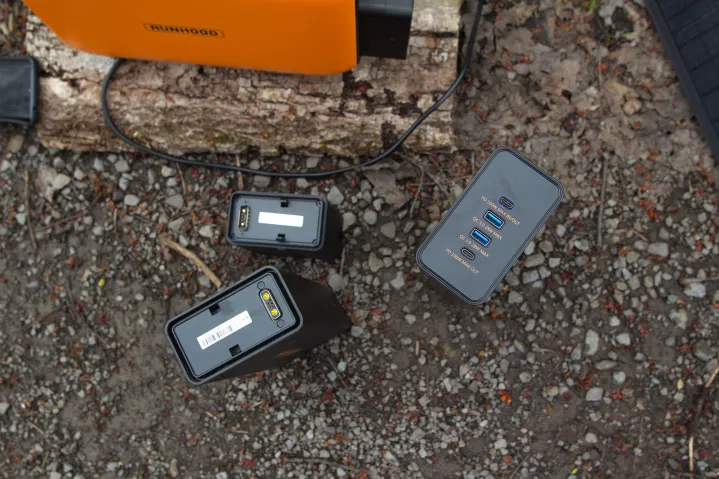
Measuring a charge from 4% to 100% clocked about 695Wh through our Emporia smart plug, and we got about 654Wh on the discharge. Each battery is rated for 324 Wh, so we’re actually seeing higher performance than their combined listed 648Wh. In practical terms, each of those individual batteries could keep my laptop going through a full, standard workday. Within the housing, the two could keep my gaming PC going for about 2.5 hours. No luck getting it to run my microwave, however. Besides the four-hour charging time, these results are roughly in line with the EcoFlow River 2 Pro which I tested earlier.
Modules are available to plug into each battery pack. This gives you power output via either USB or AC. The USB module sports two USB-A slots at 28W each, and two USB-C slots at 100W, one of which can also be used as a charging input. The AC module maxes out at 160W. These modules are somewhat necessary to make the battery packs independently useful. I’d love to see a greater variety of modules down the road, like a flashlight or a fan — simple tools that can benefit from the power supply. These are chonky batteries, so keep in mind that when you’re using them on their own, they’ll take up a fair bit of space.
Solar-ready
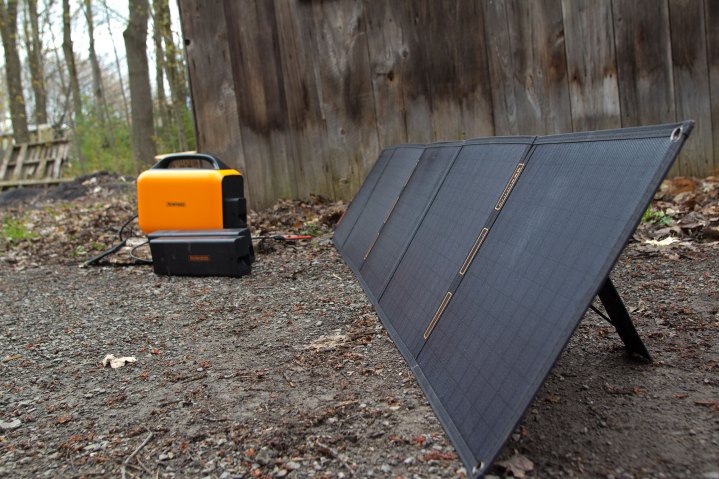
The solar panel that comes along with this kit is pretty great. It has a pouch big enough to stash almost all of the adapters you need. For the ones that don’t fit, they toss in an extra external pouch, complete with a flap for all of the manuals. This secondary pouch I use for the adapter which can charge the removable power packs directly. It’s nice to have the option to skip the power station and charge the batteries directly if needed.
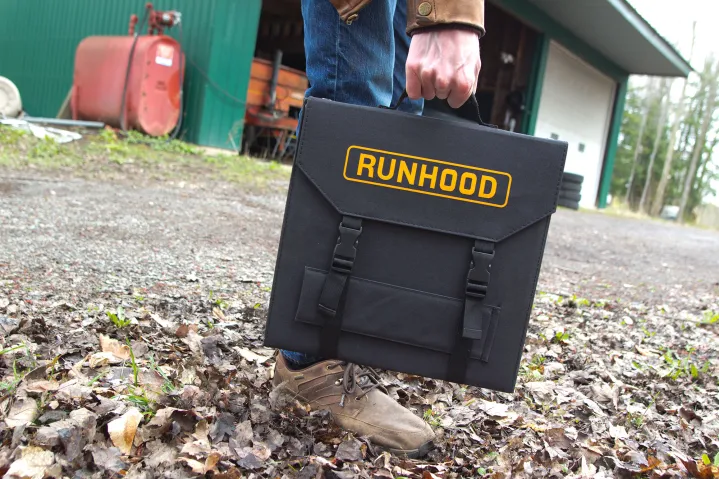
The solar panel itself is very portable. The handle has a solid rubber grip, the adjustable clips keep things packed up tightly, and all six sections have their own built-in kickstand. There are four mounting points at each corner, then another four on velcro straps along the length, providing loads of options for set-up. The overall dimensions work well for storage, but when deployed, you basically get a very long and skinny panel. I’ve found that a bit awkward to work with, versus something closer to a square.
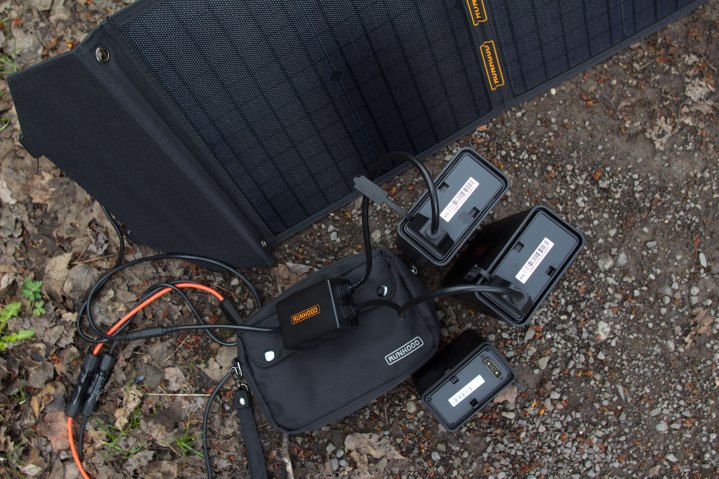
The power station can be charged via solar thanks to an included DC adapter. If you’re super gung-ho, you can plug in two panels with yet another separate adapter. Maximum Power Point Tracking (MPPT) support ensures the batteries can adapt to shifting power input rates.
Bottom line
It’s neat having a fully-integrated ecosystem, but it may be simpler just to buy a big power station and use it to charge smaller battery packs via USB ports. Yeah, it’s uglier with more cables lying around, but considering the possibility of otherwise killing one of Runhood’s proprietary battery packs through some hot-swapping fluke, it’s an aesthetic risk I’m willing to take.
Even under perfect performance conditions, the Runhood Rallye 600 is designed to meet a fairly specific demand: remote power when you’re already running on remote power. Not too many folks are routinely in a position where they’re twice removed from a reliable power source. If you are, there aren’t a lot of other products that offer what Runhood does here.

